The abandoned city of Thamugadi, also known as Timgad, is one of the most fascinating and well-preserved Roman cities in North Africa. Located in present-day Algeria, this ancient settlement was established by Emperor Trajan around 100 AD. Its immaculate Roman architecture, straight streets, grand arches, public baths, and an impressive theater that could accommodate thousands of spectators make it a remarkable window into the past. However, despite its grandeur, Thamugadi is now a ghost town, largely untouched by modern development.
What makes this city truly mysterious is its gradual abandonment. Unlike many ancient cities, Thamugadi did not fall due to war, natural disasters, or plagues. Instead, it seems to have quietly faded into obscurity, eventually buried under desert sands. The unanswered questions about its decline have captured historians and archaeologists alike. Let’s explore this abandoned city with archeology.dulichvn.net
The Foundation The Abandoned City of Thamugadi
A Testament to Roman Town Planning
Thamugadi was built as a Roman colony for retired soldiers, demonstrating the empire’s strategic town planning. The city was laid out in a grid pattern, a hallmark of Roman urban design. Straight streets intersected at right angles, dividing the city into neat, rectangular blocks.
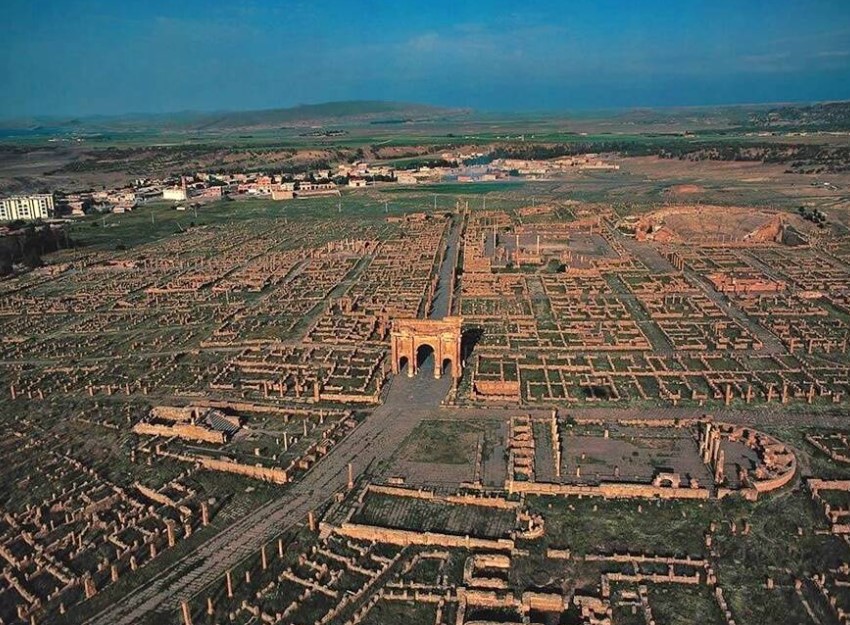
Key Architectural Marvels
Among Thamugadi’s most notable features is the Arch of Trajan, a monumental gateway symbolizing the city’s importance. The theater, with seating for thousands, hosted plays and public events, showcasing the cultural life of its residents. Public baths and forums served as centers of social and political activity.
A Flourishing Community
At its peak, Thamugadi was a thriving settlement, home to a mix of Roman veterans and local Berber inhabitants. It served as a hub for trade and governance, illustrating the cultural integration and economic prosperity of the Roman Empire in North Africa.
The Mysterious Decline The Abandoned City of Thamugadi
No Clear Cause of Abandonment
Unlike cities destroyed by invasions, plagues, or environmental disasters, Thamugadi’s decline is shrouded in mystery. Historical records provide little explanation for why a bustling Roman colony would gradually empty out.
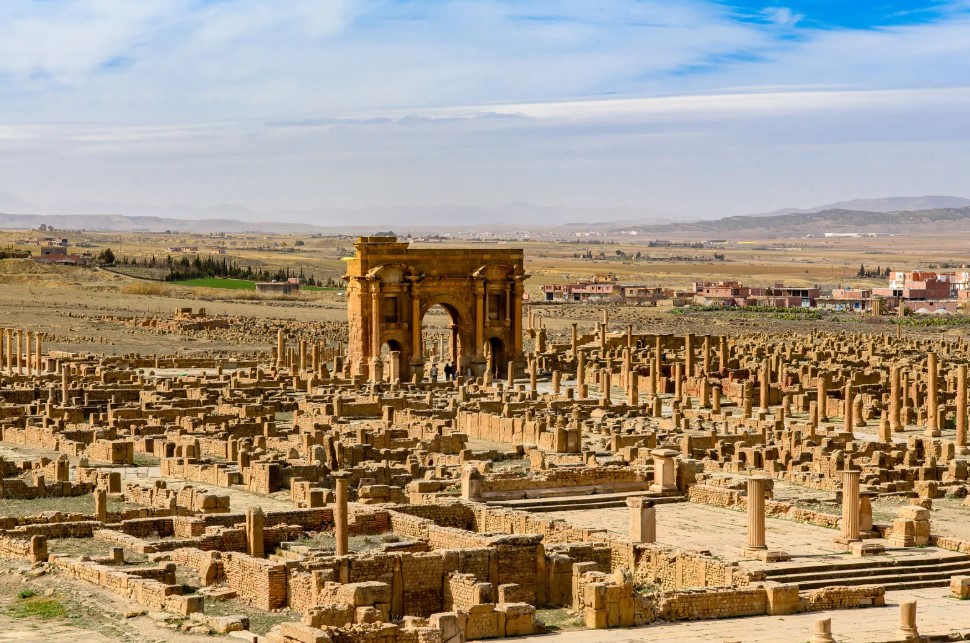
Buried Beneath the Sands
As the centuries passed, the desert slowly reclaimed Thamugadi. By the time it was rediscovered in the late 19th century, much of the city lay beneath layers of sand. This natural burial preserved its structures remarkably well, offering modern archaeologists a pristine glimpse of Roman urban life.
A Silent Witness to History
The lack of ancient accounts about Thamugadi’s decline is unusual for a city of its size and significance. This silence raises questions about the factors that led its residents to leave and why their stories remain untold.
Life in the Abandoned City of Thamugadi
A Center for Culture and Learning
Thamugadi was more than a military settlement; it was also a cultural and intellectual hub. The city boasted a library and schools, indicating a high level of education and literacy among its inhabitants.
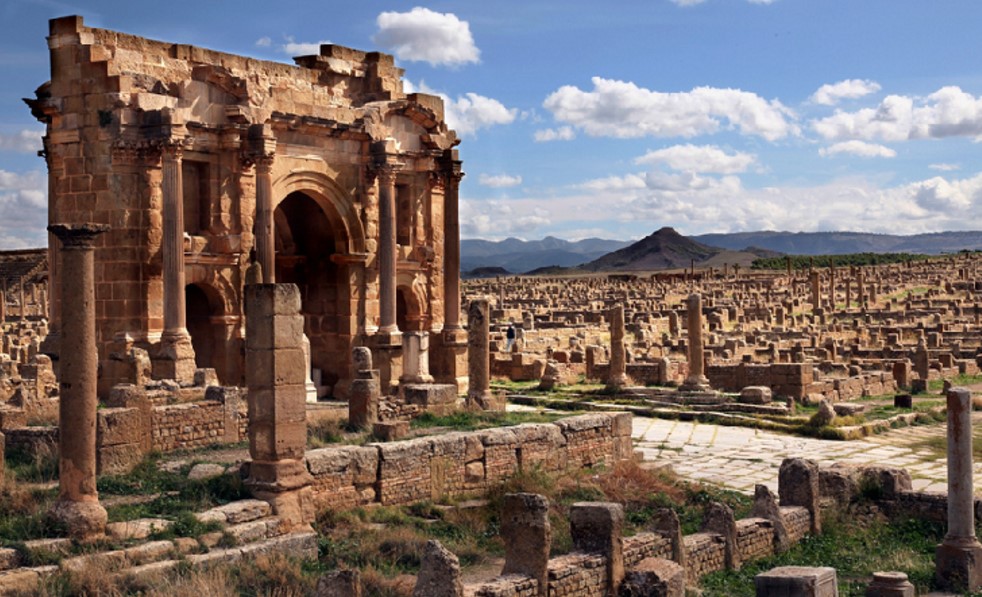
Daily Life of the Inhabitants
Residents of Thamugadi enjoyed the amenities of Roman civilization, from public baths to markets. The city’s forums were vibrant centers of debate and commerce, while its streets bustled with traders and artisans.
Religious and Social Practices
Thamugadi was home to a mix of Roman and local Berber religious practices. Temples dedicated to Roman gods coexisted with indigenous shrines, reflecting the cultural fusion of its population.
The Rediscovery of Thamugadi
Unveiling the Past
In 1881, French archaeologists began uncovering the ruins of Thamugadi. The city’s remarkably preserved state, complete with intact streets and buildings, offered an unparalleled opportunity to study Roman urban planning and daily life.
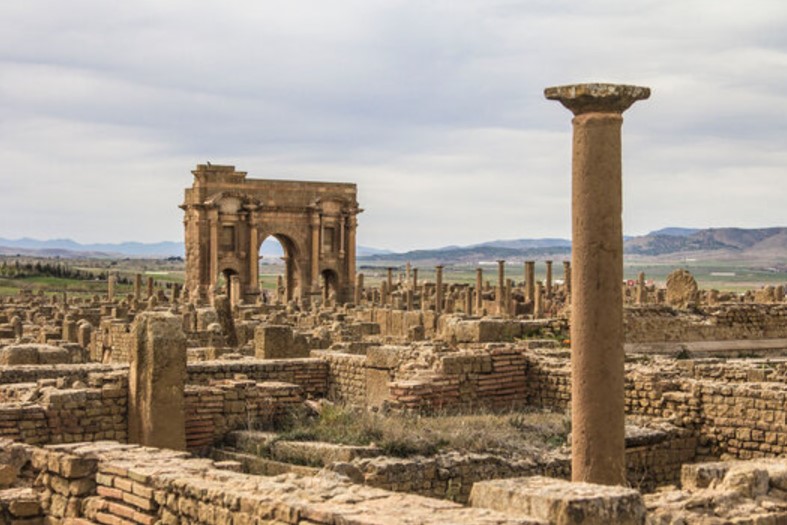
A UNESCO World Heritage Site
In 1982, Thamugadi was designated a UNESCO World Heritage Site, recognizing its significance as a cultural and historical treasure. Today, it is a popular destination for history enthusiasts and tourists.
Ongoing Archaeological Efforts
Excavations at Thamugadi continue to reveal new insights into its history. Each discovery, from inscriptions to artifacts, adds another piece to the puzzle of its mysterious abandonment.
The Enduring Legacy The Abandoned City of Thamugadi
A Glimpse into Roman Africa
Thamugadi offers a unique perspective on the Roman Empire’s influence in North Africa. Its preservation provides invaluable insights into the architectural, cultural, and social aspects of Roman provincial life.
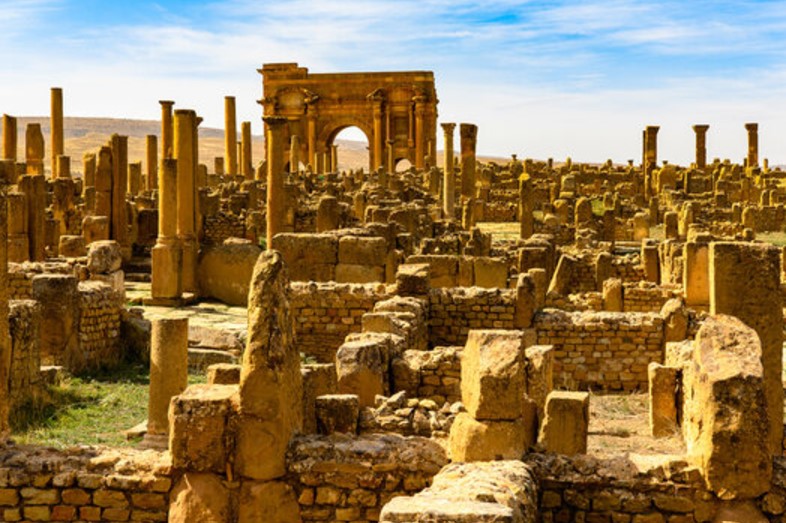
Lessons from the Past
The story of Thamugadi serves as a reminder of the fragility of human settlements. It prompts questions about sustainability, environmental change, and the forces that shape civilizations.
An Unresolved Mystery
Despite its well-preserved ruins, Thamugadi’s ultimate fate remains an enigma. The city’s silence on its decline continues to intrigue researchers, ensuring that its story will be studied for generations to come.
Conclusion
Thamugadi is more than an archaeological site; it is a testament to the grandeur and complexity of the Roman Empire. Its meticulously planned streets, majestic arches, and vibrant history stand frozen in time, offering a rare glimpse into an ancient world. Yet, the unanswered questions surrounding its abandonment add an air of mystery to its legacy.

CÁC TIN KHÁC
Mark Twain & Olivia Langdon: A 36-Year Love Story Filled with Laughter and Devotion
The Tollund Man: A 2,400-Year-Old Mystery Preserved in a Danish Bog
Skara Brae: Scotland’s Hidden Neolithic Village
Porta Nigra: The Hidden Depths of Trier’s Iconic Roman Gate